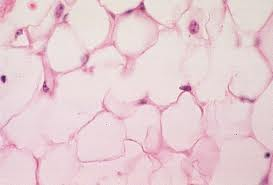 Fat grafting is the new sexy thing in plastic surgery. It should be- I think it holds a lot of promise. The issue comes when a lot of companies and ideas try to claim their way is better. So is it? Does platelet rich plasma and stem cell rich fat do better? And is it feasible? Are there areas it makes more sense (like for smaller volume transfers to the face, but not large volume transfers to the body/breast?)
Fat grafting is the new sexy thing in plastic surgery. It should be- I think it holds a lot of promise. The issue comes when a lot of companies and ideas try to claim their way is better. So is it? Does platelet rich plasma and stem cell rich fat do better? And is it feasible? Are there areas it makes more sense (like for smaller volume transfers to the face, but not large volume transfers to the body/breast?)
So at my favorite TIPS Plastic Surgery meeting in San Francisco in June we discussed many of the new things out there. What I am repeating here is what I learned there.
- platelet rich plasma. Good stuff, may help fat survive, BUT you need a large amount of blood to get enough to help. Likely not feasible.
- stem cells. Studies showed if you supplement fat with stem cells you can increase survival. Again a feasiblity issue- you need a lot of fat for a tiny plug of stem cells. Many women seeking fat transfer don’t have much fat to transfer, much less extra liters of fat to spin down for a small plug of stem cells.
There is still a lot of controversy. Yoshimura out of Tokyo has looked at stem cells a lot. He focuses on the face. He published a study in the Aesthetic Plastic Surgery Journal in 2008 showing adipose stem cell enriched fat showed increased transfer efficacy. (IN NON DOCTOR TALK= When you move the fat, if you add stem cells to it, more of it lives.) The ratio of stem cells to fat he used was high. An issue remains – in order to get that amount of stem cells you need to harvest a lot of fat and distill it down to get the little tiny amount of stem cells. Again, as I alluded to above, maybe stem cell enriched fat is better for smaller areas, where you are grafting less fat. For large areas, it can be hard just to get enough fat to transfer, much less get extra liters of fat to spin down for stem cells to enrich the fat. And many in the plastic surgery field say you don’t need to enrich the fat with stem cells, as fat is a rich source of stem cells in itself. They argue when you transfer fat, you are transferring stem cells already in the fat.
And there are other basic questions about fat grafting which we don’t fully understand yet. (This gets into more science-y stuff, so some of you may tune out)
- Do the cells you transfer live? Or do the cells die and release something the neighboring cells like?
- When he looked at the cells 4 weeks out, he found a lot of cells are dead, but there were new cells from the progenitor cells. (It was like you tranferred a mommy cell which gave birth to new baby cells and then the mommy cell died.)
- At 3 months he found no more new fat. At that point you could see oil cysts. (So things tend to stay stable after 3 months. Until that point there is more flux with fat cells- some which have died are bdisappearing and the new cells which formed are growing)
From his research he hypothesizes during the first 3 months you see tissue repair, then for the next 9 months you see stabilization, oil absorbtion, or oil cyst formation. Understanding what happens to the fat when we move it will help us be better at helping it survive in its new location.
All good stuff to help us make fat grafting techniques improve.
